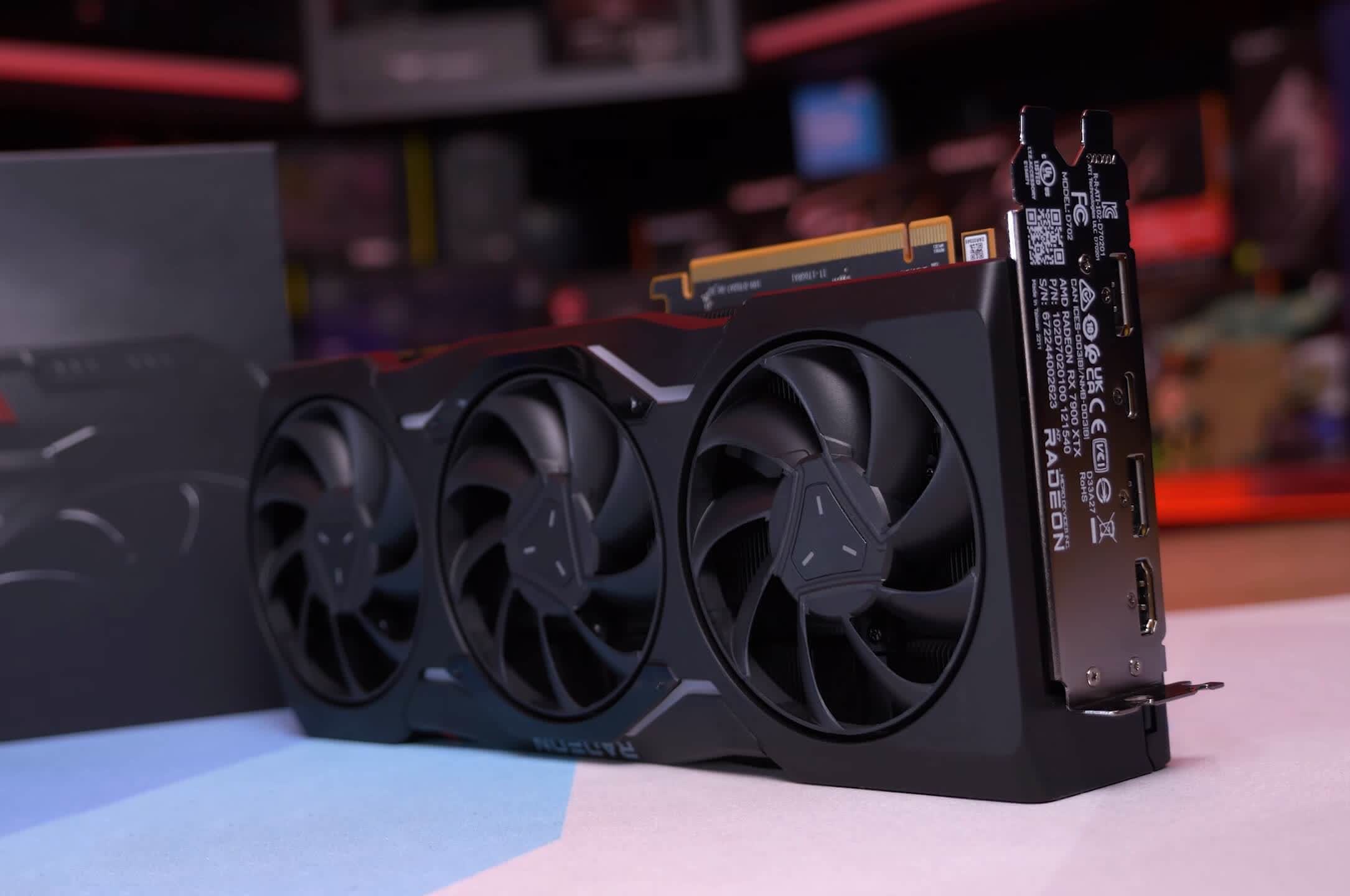Something to look forward to: A partial data sheet has revealed some new details about the ray tracing capabilities coming to AMD's next-gen RDNA 4 GPU architecture. Headlining the list is something called a "Double Ray Tracing Intersect Engine." The data sheet doesn't delve into any details beyond listing the features, so we can only guess what it means.
From the name, Double Ray Tracing Intersect Engine could mean one of two things: either AMD is doubling the number of dedicated ray tracing units compared to RDNA 3, or these new RT engines can process twice as many ray-triangle intersection calculations per clock cycle. Either way, this could significantly boost RT performance.
The leak, as shared by @Kepler_L2, hints at some under-the-hood optimizations and efficiency improvements. RDNA 4 will pack 64-byte ray tracing nodes and includes a "Ray Tracing Tri Pair Optimization." There are also supposedly some enhancements coming to improve BVH (bounding volume hierarchy) traversal performance. Specifics are again lacking, but it's fair to assume the changes will boost performance while lowering computational workload at the same time.
Some of the new RT features coming with gfx12/RDNA4. Most if not all of these should be in the PS5 Pro too ð pic.twitter.com/AO5HaxJlMK
– Kepler (@Kepler_L2) July 21, 2024
How effective these improvements will be can only be ascertained when some real benchmarks show up or, better yet, we get our hands on the GPUs. But any enhancements are welcome.
AMD has long lagged in ray tracing and although progress has been made, Nvidia's offerings continue to pull ahead. For instance, despite the impressive rasterization muscle of AMD's latest RDNA 3 flagship, the RX 7900 XTX, when ray tracing effects get cranked up, even older Nvidia GPUs like the RTX 3090 Ti can outclass it.
These early RDNA 4 leaks position advanced ray tracing capabilities as a key area of focus for AMD's next architectural revamp, which makes total sense from a future-proofing standpoint. The improved RT hardware won't just be aimed at high-end gaming PCs either. It will likely make its way into the inevitable PS5 Pro console refresh too, delivering improved visuals on Sony's next-gen machine even though the console is expected to be built mostly around RDNA 3, utilizing RDNA 4 solely for boosting RT performance.
Of course, while mainstream RDNA 4 desktop graphics cards probably won't debut until early 2025, all signs point to an AMD vs Nvidia slugfest unfolding over the next year. Nvidia's own next-gen Blackwell offerings, presumably launching as GeForce RTX 50 series GPUs, are also rumored for a CES 2025 unveiling.
While AMD's RX 8000 series seems to heavily focus on ray tracing, Nvidia isn't resting on its laurels and could once again pull ahead in that department if these improvements are anything short of a generational leap.
